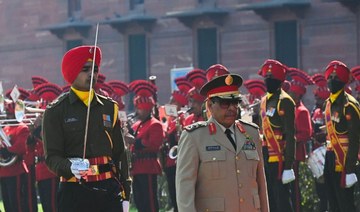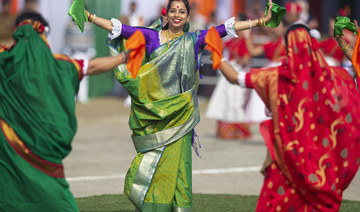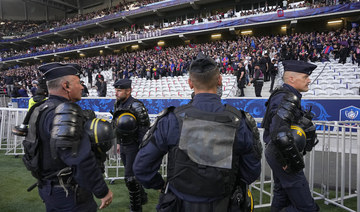India recently celebrated 75 years of independence. The idea of “Amrit Kaal” builds on this with a road map for the next 25 years, taking us to 2047 when India will celebrate 100 years of independence.
The India of 2023 is, of course, very different from the India of 1947, and the India of 2047 in turn will be different from the India of 2023 in ways few can anticipate and project; if one casts one’s mind back, how many would have guessed the changes wrought in India over the past 25 years?
The world is an uncertain place, and in the long term even more so. While the future is always uncertain, the current state of the world has been permeated with an additional dose of uncertainty as a result of factors such as the COVID-19 pandemic, geopolitical tensions, the collapse of the multilateral system and regionalism, the retreat of advanced countries from globalization, and the dreaded warnings of “recession” in some of those countries.
These are external shocks that have been thrust on India, as they have on many emerging market economies, and underline the collapse of institutions that provide global public good, the Bretton Woods institutions included.
Global governance has yet to accept the rise of economies such as India. Lord Keynes is often quoted, usually out of context, as sharing the cliche: “In the long run we are all dead.” If one reads the complete text (“The Tract on Monetary Reform,” 1923), one will find his intention was not quite what this out-of-context quote might convey.
There is certainly much that is uncertain in the world, at present and for the long term. But there is also much of which we can be certain. Within that band of certainty, it is impossible to dispute India’s inexorable economic rise.
Much was made of the Goldman Sachs report “Dreaming with BRICS: The path to 2050,” when it was published in 2003. BRICS refers to the leading emerging economies of Brazil, Russia, India, China and South Africa.
It predicted an average real rate of gross domestic product growth in India of about 5.5 percent, with the rise in aggregate GDP and per capita GDP by 2050 explained by the nature of the exponential function.
The report did not include a projected figure for 2047 specifically but did give one for 2045: It predicted that India’s aggregate GDP would be $18.8 trillion, with per capita GDP of just over $12,000.
None of the reasons behind these optimistic projections have been nullified by the current global uncertainty — increase in savings/investment rates as a result of demographic transition and income growth, growth drivers in more efficient land, labor and capital markets and productivity enhancement.
To use an economist’s expression, India is still within the production possibility frontier, not on it. To put it another way, aggregate growth for India is a summation of growth in states, and states are within their respective frontiers, providing plenty of endogenous slack for growth.
Had events in the external world been more benign, India might have grown at 9 percent. Typically, one tends to extrapolate the gloominess of the present into the future. It is by no means obvious that global conditions will continue to be difficult for the next 25 years. But even if that were to be the case, India still might not grow at 9 percent. What growth rate seems reasonable, therefore?
The answer depends on the person making the projection and the assumptions that are made. A nominal figure depends on assumptions about inflation, which is why projections are often presented in real terms, in today’s dollars. A dollar figure also depends on assumptions about the dollar/rupee exchange rate, which is why projections are often based on the current exchange rate (the Goldman Sachs report assumed appreciation of the rupee vis-a-vis the dollar.) A prediction based on purchasing power parity is, naturally, different.
With inflation and exchange rate fluctuations out of the way, then, what trajectory of real growth in India sounds reasonable? The pessimistic forecaster will point to domestic inefficiencies and the state of the wider world and opt for 5.5 percent. The optimistic forecaster will point to empowerment through easier living and the provision of basic necessities, greater ease of doing business, supply-side reforms, and the government’s capital expenditure and opt for 7.5 percent.
That is the rough range of growth to consider, with recognition that as an economy grows, growth rates slow. As one moves up the development ladder, it becomes more difficult to grow as quickly, with the caveat that different states are at different levels of development and so there is plenty of slack.
To return to long-term uncertainty, one can plug in one’s own assumptions about real growth, say something like 6.5 percent, midway between the extremes of 5.5 percent and 7.5 percent. Based on that, India’s per capita income in 2047 would be something like $10,000 and the total size of the economy will approach $20 trillion.
These figures are broadly in the same range as the Goldman Sachs predictions, in which the role of exchange rate appreciation was relatively greater. In such projections, the role of real growth is relatively more.
If reforms succeed in driving economic growth higher than 6.5 percent — and such a “citius, altius, fortius” (faster, higher, stronger) possibility cannot be ruled out — the corresponding numbers will be higher.
Even with the relatively conservative figures, however, India would be the third-largest economy in the world, after the US and China, and this will naturally be reflected in India’s global clout. In a purchasing power parity ranking, India would be second-largest after China.
India’s annual rate of population growth has slowed and is now less than 1 percent. Nevertheless, in 2047, it will be the most populous country in the world, with a population of about 1.6 billion.
Expressions such as “developed country” are rarely used these days and the term no longer has a specific definition. The World Bank instead uses terms such as “middle-income.” India is currently classified as a lower-middle-income economy. By 2047, it will have moved to upper-middle-income classification.
When a country approaches a per capita income of $13,000, its status shifts to high-income. That will be when India can be said to be “developed.” In 2047, India will still fall short of this but the face of poverty in the country, as we know it, will have been completely transformed.
The measurement of poverty is based on the notion of a “poverty line” and, by using a multi-dimensional poverty index, the UN Development Program recently documented a sharp drop in the number of people in India categorized as “poor.”
As economies develop, the position of a poverty line of course shifts upward, beyond merely a subsistence level of consumption. Officially, however, the poverty line that continues to be used in India is still the Tendulkar poverty line. Unfortunately, consumption expenditure data, which is used to measure poverty, does not exist beyond 2011/12. Therefore different analysts now use different assumptions to measure poverty.
If, for example, one uses periodic labor force survey data and the Tendulkar poverty line, the poverty ratio (the percentage of the population below the poverty line) is currently about 17 percent. By 2047, it is forecast that this will have fallen to about 5 percent.
Sustainable Development Goal reports, among other analyses, have documented pockets of deprivation in specific geographical regions, which have been targeted by the government through its Aspirational Districts Program. India is a heterogeneous society and so despite the provision of basic necessities — such as physical and social infrastructure, financial inclusion, access to markets, technology and digital access — and an overall message of empowerment, there will continue to be pockets of poverty in the country, even in 2047.
But the nature of that poverty will be very different compared with today. India will have achieved universal literacy, or be pretty close to it. UNDP uses the Human Development Index, an aggregate measure, to gauge the development of people beyond poverty ratios. Currently, India is in the medium category of human development, based on HDI. By 2047, it will rank in the high category of human development.
There are five transitions underway and these will be even more pronounced by 2047. Firstly, there is a rural-to-urban shift, and urbanization correlates with development. By 2047, almost 60 percent of India’s population will be urbanized. It is predicted that Delhi and Kolkata will have populations of about 35 million, and Mumbai more than 40 million. The mind boggles at such figures and government programs are being developed with the aim of ensuring urbanization is better managed.
Secondly, there will be greater formalization of the economy. Such formalization is another factor that correlates with growth and development. Employees will have formal job contracts. Micro, small and medium enterprises will be legally registered. Indian companies will become larger, more efficient, and fully integrated into global supply chains.
Thirdly, the percentage of the population that earns a living from agriculture will decline. Agriculture’s share in gross domestic product will decline to something like 5 percent, and the percentage of the population earning a living from agriculture will not be more than 20 percent. Fourthly, there will be a shift in agriculture toward commercialization, diversification and larger farms.
Fifthly, there will be greater participation of citizens in governance, in keeping with the theme of “sabka prayas” (everyone’s effort). For years, there was a colonial chip on the nation’s shoulder. But present-day India is a proud India, a resilient India, an aspiring India. Amrit Kaal reflects that, and the country is making great strides on economic fronts, with greater confidence and entrepreneurship.
- Bibek Debroy is the chairman of the Economic Advisory Council to the Prime Minister in the Government of India.




























